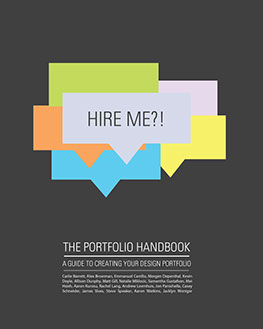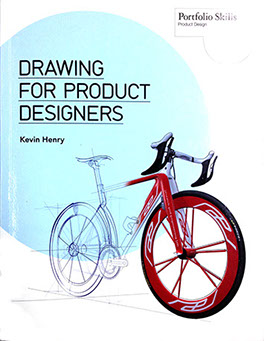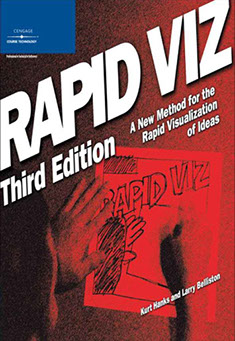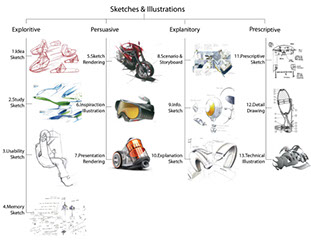RECOMMENDED TEXTS & ARTICLES
Build your library one book at a time and you'll be surprised, and proud of how much you gain from these over the years. Below are just a few of my books on design drawing, rendering and representation. Check out the books from Design Studio Press and Art Center's book store has an excellent collection you can browse before you buy.

“To me, to be an architect, you have to be educated, and what you would take on a desert
island if you’re an architect is not a computer — you’d take 10 books.” —Peter Eisenman
GENERAL PERSPECTIVE, FOUNDATION
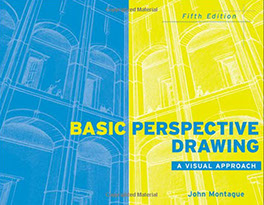
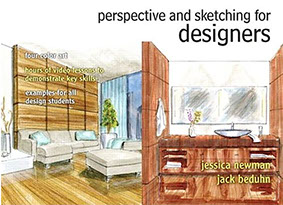
Basic Perspective Drawing: A Visual Approach. John Montague. Wiley Publications.
Perspective and Sketching for Designers. Jessica Newman, Jack Beduhn. Pearson Publishing. ISBN 0-13-257494-2; ISBN 0-13-301205-0 - book with on-line resource pass
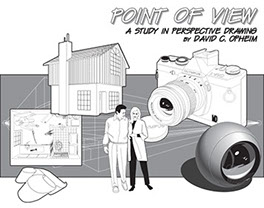
Point of View: A Study in Perspective Drawing. David C. Opheim.
Available at www.danburystreetpress.com.
To get a copy pay online, download it,
and have it printed and bound.
INDUSTRIAL AND PRODUCT DESIGN SPECIFIC
FREE DOWNLOAD!
Drawing for Product Designers. Kevin Henry. Laurence King Publishing. ISBN-10: 1856697436,
ISBN-13: 978-1856697439
Rapid Viz: A New Method
for the Rapid Visualization
of Ideas. Kurt Hanks.
Cengage Learning PTR.
ISBN-10: 159863268X,
ISBN-13: 978-1598632682
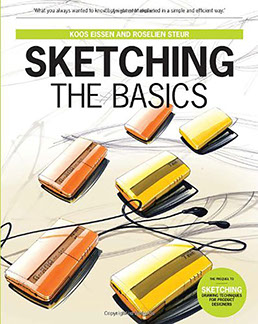
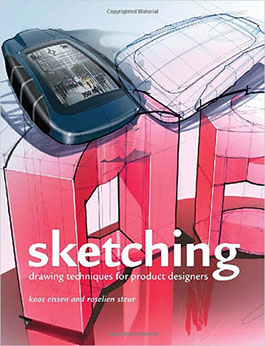
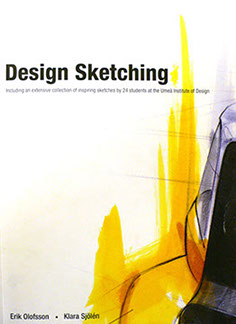
Sketching: The Basics. Koos Eissen and Roselien Steur. BIS Publishers.
ISBN 978-90-6369-253-7
Sketching: Drawing Techniques for Product Designers. Koos Eissen and Roselien Steur. BIS Publishers
Design Sketching. Erik Olofsson
and Klara Sjolen.
ISBN 978-91-976807-0-7 www.designsketching.com
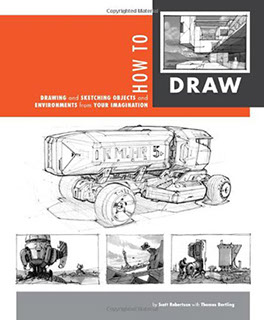
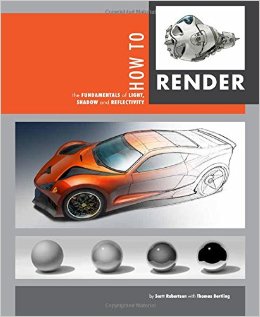
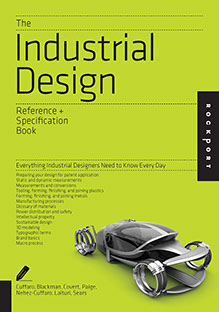
How to Draw. Scott Robertson.
Design Studio Press.
ISBN 978-193349273-5
How to Render. Scott Robertson.
Design Studio Press.
ISBN-13: 978-1933492964
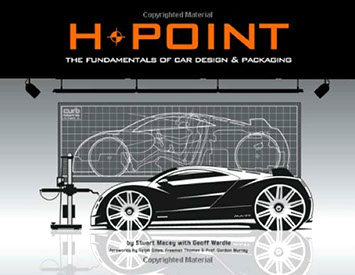
H-Point: The Fundamentals of Car Design & Packaging. Stuart Macey with Geoff Wardle. Design Studio Press. ISBN 978-1-933492-37-7
ID ARTICLES AND ESSAYS
A Periodic Table of Form: The secret language of surface and meaning. by Gray Holland. on Core77.com. Mar 2, 2009
"Design has nothing to do with art": Design legend Milton Glaser dispels a universal misunderstanding. by Anne Quito. On Quartz (qz.com). October 31, 2016
Why is Sketching Still Important to Design? by James Self. on Core77.com. Jun 6, 2016
INTERIOR AND ARCHITECTURAL DESIGN SPECIFIC
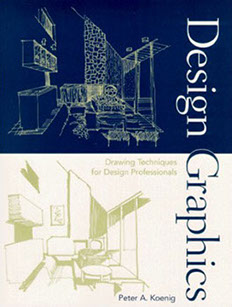
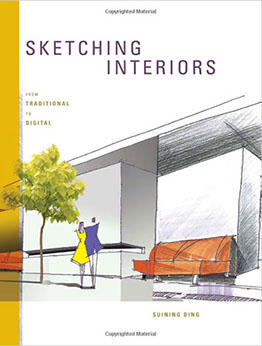
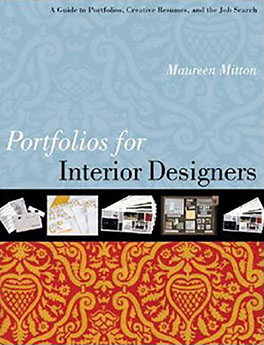
Design Graphics: Drawing Techniques for Design Professionals. Peter A. Koenig.
Prentice Hall.
Sketching Interiors: From Traditional to Digital. Suining Ding. Fairchild Books
ISBN: 978-1-56367-918-6
Portfolios for Interior Designers
Maureen Mitton
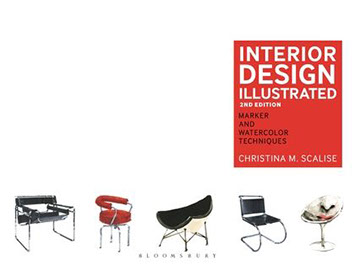

Interior Design Illustrated: Marker and Watercolor
Techniques. Christina M. Scalise.
Bloomsbury Publishers. ISBN-13: 978-1609019174
Drawing and Designing with Confidence: A Step-by-Step Guide. Mike W. Lin. Wiley Publications
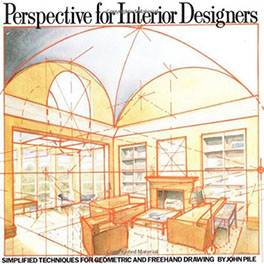
Perspective for Interior Designers. John Pile.
Whitney Library of Design
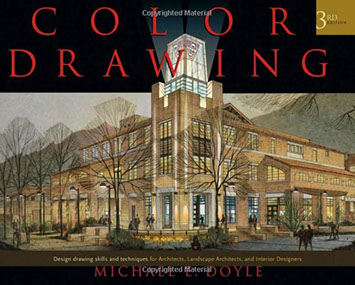
Color Drawing: Design Drawing Skills and Techniques for Architects, Interior Designers, and Landscape Designers. Michael Doyle. Wiley Publications.
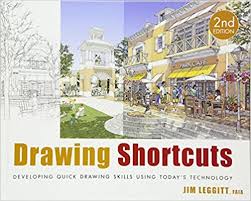
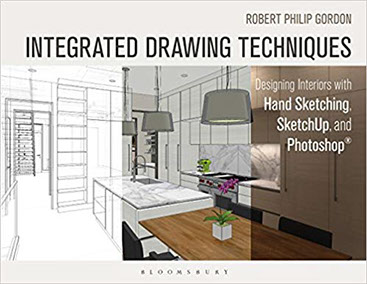
Drawing Shortcuts: Developing Quick Drawing Skills Using Today's Technology. Jim Leggitt, FAIA. Wiley Publications.
Integrated Drawing Techniques: Designing Interiors with Hand Sketching, SketchUp, and Photoshop. Robert Philip Gordon. Bloomsbury Publishing
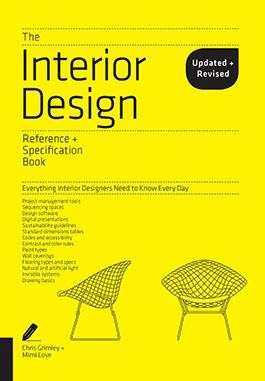
GRAPHICS AND IMAGING
Introduction to Imaging: Issues in Constructing an Image Database [online book]. Besser, Howard and Jenniver Trant. 1995. The Getty Art History Information Program
RELATED TOPICS
The Analysis-Synthesis Bridge Model. Hugh Dubberly, Shelley Evenson, and Rick Robinson. Mar 1, 2008
Design Principles: The Visual Perception and the Principles of Gestalt. Steven Bradley. Smashing Magazine. Mar 29, 2014
Sketching in the Digital Age: More Relevant than Ever? Arup Connect. ArchDaily. July 9, 2013
GENERATIVE DESIGN
Generative Design [Revised and Updated Edition]. Benedikt Gross, Hartmut Bohnacker, Julia Laub, Claudius Lazzeroni. Princeton Architectural Press. 2018
Summary: Generative design, once known only to insiders as a revolutionary method of creating artwork, models, and animations with programmed algorithms, has in recent years become a popular tool for designers. By using simple languages such as JavaScript in p5.js, artists and makers can create everything from interactive typography and textiles to 3D-printed furniture to complex and elegant infographics.
This updated volume gives a jump-start on coding strategies, with step-by-step tutorials for creating visual experiments that explore the possibilities of color, form, typography, and images. Generative Design includes a gallery of all new artwork from a range of international designers---fine art projects as well as commercial ones for Nike, Monotype, Dolby Laboratories, the musician Bjork, and others.
Benedikt Gross and Hartmut Bohnacker are professors of interaction design at the HfG Schwabisch Gmund in Baden-Wurttemberg, Germany. Julia Laub is cofounder of the design studio onformative in Berlin. Claudius Lazzeroni is a professor of interface design at the Folkwang Kunsthochschule in Essen, Germany.
Processing: A Programming Handbook for Visual Designers and Artists (Second Edition). Casey Reas and Ben Fry. Published December 2014, The MIT Press.
Summary: Since it first emerged in 2001, Processing has grown into a flourishing community of thousands of artists, designers, makers, and educators. It has redrawn the boundaries of art and technology, affecting communities in contexts as various as the classroom to the art museum to the hackerspace. After 12 years of development and being intensively taught in classrooms, the second edition of the Processing textbook was released in December 2014.
By teaching computer programming with the context of the visual arts, this book has introduced a new literacy with software, enabling designers and artists to create new media for the present, and to imagine future media that are beyond the capacities of current software tools. It offers a thorough introduction to Processing, an open-source programming language that is used by students, artists, designers, architects, researchers, and anyone who wants to program images, animation, and interactivity. Written by Processing’s cofounders, the book offers a definitive reference for students and professionals. Tutorial chapters make up the bulk of the book; advanced professional projects from such domains as animation, performance, and installation are discussed in interviews with their creators.
This second edition has been thoroughly updated, influenced by the seven years of Processing being taught in classrooms, computer labs, universities, art and design schools, and arts institutions since the first edition. Every chapter has been revised, and new chapters introduce more ways to work with data and geometry. New “synthesis” chapters offer discussion and worked examples of such topics as sketching with code, modularity, and algorithms. Interviews have been added that cover a wider range of projects. “Extension” chapters are now offered online so they can be updated to keep pace with technological developments in such fields as computer vision and electronics.
Interviews with SUE.C, Larry Cuba, Mark Hansen, Lynn Hershman Leeson, Jürg Lehni, LettError, Golan Levin and Zachary Lieberman, Benjamin Maus, Manfred Mohr, Ash Nehru, Josh On, Bob Sabiston, Jennifer Steinkamp, Jared Tarbell, Steph Thirion, and Robert Winter.
^
* Estimate only. See instructor and calendar for specific due dates. Summer Session schedule is more compressed with one week equal to approximately two and half semester weeks.
CSULB | COTA | DEPARTMENT OF DESIGN | BIO

Questions, feedback, suggestions?
Email me with your recommendations.
©2020 Michael LaForte / Studio LaForte, All Rights Reserved. This site and all work shown here is purely for educational purposes only. Where ever possible student work has been used or original works by Michael LaForte.
Works by professionals found online or in publication are used as instructional aids in student understanding and growth and is credited everywhere possible.
